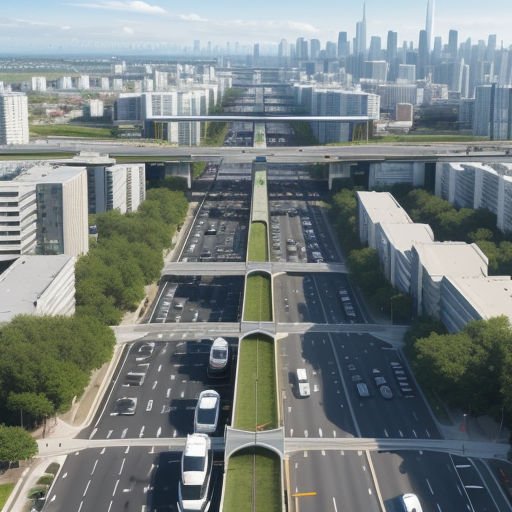Why Connected Vehicles Are About To Make Traffic Jams History
Transforming Urban Mobility with Connected Vehicles
Traffic congestion is more than just a daily nuisance; it impacts productivity, air quality, and overall quality of life. Traditional solutions like expanding roadways or encouraging public transit often fall short or require massive investment. Enter connected vehicles, a revolutionary technology poised to tackle traffic jams by leveraging real-time data, communications, and automation. These vehicles interact with each other, roadside infrastructure, and cloud services to make driving smarter, smoother, and far less congested. As the Internet of Things expands into transportation, connected vehicles offer a proactive approach to managing traffic flow, reducing accidents, and optimizing routes dynamically, signaling a future where hours lost in gridlock might become history.
Understanding Connected Vehicles and Their Capabilities
What Are Connected Vehicles?
Connected vehicles are equipped with sensors, communication devices, and software that allow them to share information with other vehicles (V2V), infrastructure (V2I), networks (V2N), and pedestrians (V2P). This ecosystem enables them to function as intelligent nodes that continuously exchange data about speed, location, direction, road conditions, and hazards.
Key Features Enabling Traffic Optimization
– Real-time data exchange to anticipate and react to traffic conditions swiftly
– Adaptive cruise control and platooning to maintain optimal speeds and safe distances
– Dynamic routing suggestions based on current traffic data
– Integration with traffic signals and road infrastructure to streamline flow
– Early warnings about accidents, roadwork, or adverse weather conditions ahead
These features collectively empower connected vehicles to harmonize their movements, prevent bottlenecks, and make better driving decisions.
How Connected Vehicles Reduce Traffic Congestion
Enhancing Traffic Flow Through Communication
One of the primary reasons for traffic jams is human reaction delay. When a driver brakes suddenly, it causes a ripple effect—drivers behind slow down more abruptly, leading to stop-and-go waves. Connected vehicles mitigate this by instantly sharing deceleration data with nearby vehicles, enabling smoother braking patterns and maintaining steady traffic flow.
Smart Signal Systems and Vehicle Coordination
Connected vehicles communicate with smart traffic lights that adjust timing based on real-time traffic volume, prioritizing green lights dynamically to reduce idle time. This vehicle-to-infrastructure cooperation prevents unnecessary stop-and-go and evenly spreads traffic across available routes.
Reducing Incident-Induced Gridlock
Accidents and road obstacles are major causes of sudden congestion. Connected vehicles provide early warnings about hazards ahead, allowing drivers to slow down safely or reroute before bottlenecks occur. Emergency vehicles can also communicate their routes, ensuring minimal disruption to normal traffic.
Technological Pillars Supporting Connected Vehicles
5G Networks and Low Latency Communication
Reliable and near-instantaneous data transfer is critical for connected vehicles. 5G networks enable ultra-low latency, meaning vehicles can communicate and respond within milliseconds. This immediacy is crucial for safety alerts and synchronized driving maneuvers.
Cloud Computing and Big Data Analytics
Data from thousands of connected vehicles is aggregated in the cloud, where advanced algorithms analyze traffic patterns and predict congestion points. This intelligence feeds back into navigation systems and traffic controls, continually optimizing flow across entire cities.
Edge Computing for Real-Time Decision-Making
Although cloud resources are powerful, some data processing must happen locally to respond instantly. Edge computing devices embedded in vehicles and roadside units handle this, ensuring split-second decisions vital for safety and traffic management.
Benefits Beyond Congestion Relief
Improved Road Safety
Connected vehicles help prevent accidents through collision avoidance systems and coordinated braking. Sharing information about potential hazards with nearby drivers reduces the likelihood of crashes, which themselves can cause traffic jams.
Environmental Impact Reduction
By smoothing traffic flow and reducing idle times, connected vehicles lower fuel consumption and emissions. This supports greener urban environments and helps cities meet sustainability goals.
Enhanced Commuter Experience
Drivers receive dynamic route updates, parking availability notifications, and even vehicle health alerts, turning daily commutes into less stressful, more predictable experiences.
Challenges and the Path Forward for Connected Vehicles
Infrastructure Upgrades and Investment
Implementing connected vehicle technology requires widespread investment in roadside sensors, smart traffic lights, and communication networks. Public-private partnerships and supportive policies will be essential for scaling.
Data Privacy and Security Concerns
Sharing extensive vehicle and location data raises privacy issues. Robust encryption and secure communication protocols are mandatory to protect users and prevent cyberattacks.
Standardization and Interoperability
For connected vehicles to reach full potential, industry-wide standards ensuring seamless communication among different vehicle models and infrastructure elements are critical.
Looking Ahead: What the Future Holds for Connected Vehicles
The rapid advancement of artificial intelligence, machine learning, and 5G connectivity will only accelerate connected vehicle capabilities. Future developments may include fully autonomous vehicle fleets that manage themselves collaboratively to eliminate congestion entirely.
Cities worldwide are piloting connected vehicle technologies, showing promising reductions in traffic delays. As adoption grows, the collective impact will profoundly reshape urban mobility, potentially ending the era of frustrating traffic jams.
For more information on smart transportation systems, visit the U.S. Department of Transportation’s connected vehicle program at https://www.its.dot.gov/connected_vehicle/connected_vehicle.htm.
Smart, connected vehicles represent a transformative leap forward in traffic management and urban mobility. By harnessing real-time data and cooperative vehicle behavior, they promise to make traffic jams a relic of the past. Embracing this technology today by supporting infrastructure development and staying informed about advancements will prepare us for a future of smoother, safer journeys.














Post Comment